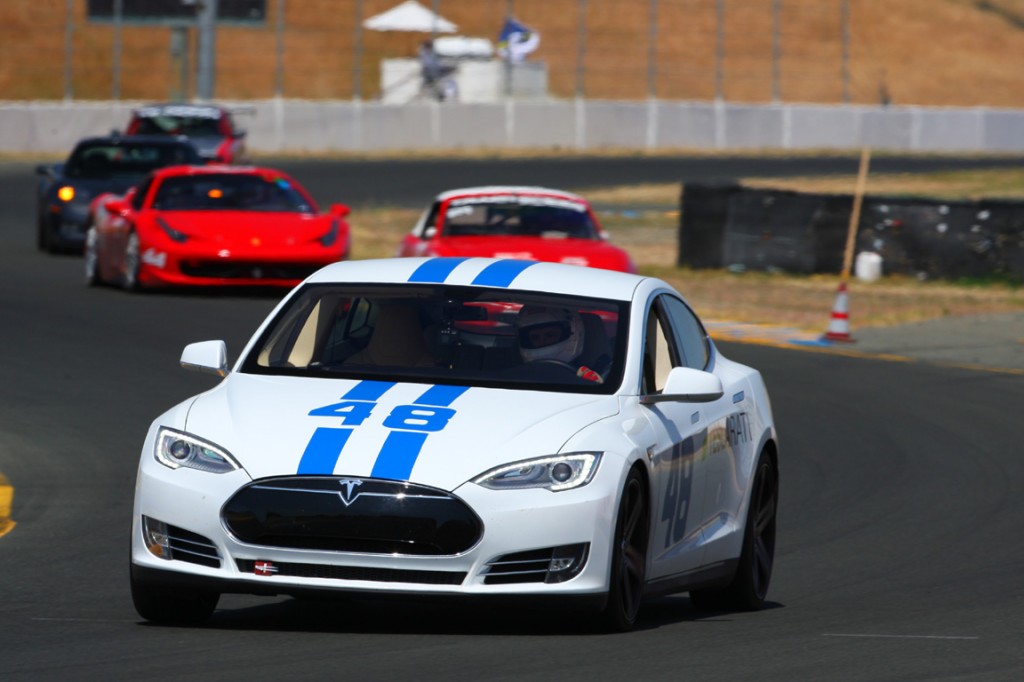Lifestyle
Tesla Racing Tips: Your First Track Day
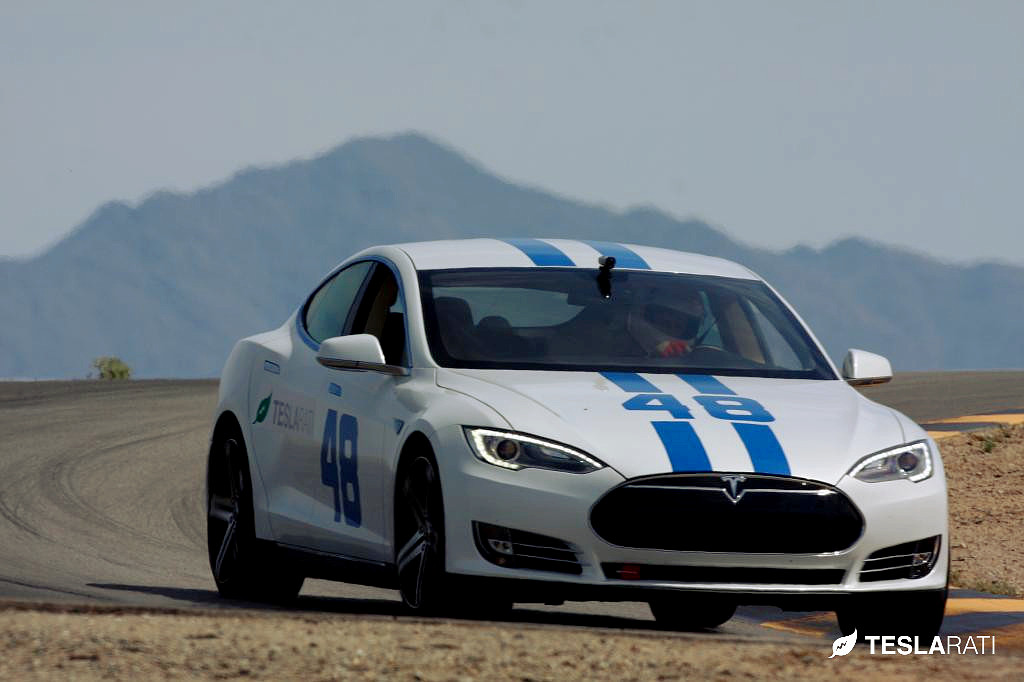
Track days are one of the most exhilarating activities one can experience. It’s a chance to take your favorite car to a real race track to see what it’s capable of. See how you fair as a driver, learn firsthand about the culture of motorsports, and experience what performance driving is really like. We’ll be providing an overview of what to expect along with some Tesla specific tips for your first track day.
How Does it Work ?
Track days are set up by independent motorsport event organizers that make arrangements with various race tracks. There are usually several of them covering each state. Examples:
- Speed Ventures in Southern California
- NCRC in Northern California
- NASA throughout US
Each company will have 3 or more groups separated by driver experience. For example,
Blue – beginner
Purple – intermediate low
Black – intermediate high
Red – advanced
You start in the beginner group, and as you build your experience you move up to the next level.
How Much does it Cost ?
Depending on the track, the cost can be as low as $100 and as high as $400 per day. The average is usually around $200, but be sure to also include the following:
- travel/lodging costs
- track gate fee, around $15
- helmet rental if you don’t have your own, around $30
- about $60 per session if you want an instructor
- RV spot rental for charging, around $20 per day
- professional photos from the track (highly recommended), around $40
- participation in competition or ‘challenges’.
If you continue your racing adventures, over time you will want to get your own equipment such as a helmet, racing suit, racing tires and a professional camera.
Is it Real Racing ?
Technically speaking, racing refers to competition racing, also known as wheel to wheel racing. Open track racing competes for best lap times where as competition racing usually competes for best positioning (ie. the first one at the finish line wins). Motorsports groups such as Speed Ventures make it a fun experience by structuring the open track events to resemble competition with qualifying sessions and pre-grid positions.
Will My Car Get Damaged?
With competition racing, your objective is to win by any means necessary, which can include risking damage to your car as well as the competitor’s. In open track racing, the objective is to have fun, learn performance driving, be competitive, but walk away with your car intact. Safety should always be kept in mind and any risk-taking should be weighed against its consequences. The beginner group will consist of those who have never been on a race track before so exercise as much caution as possible when racing in this group.
Will my Insurance Cover Track Days?
In most cases, the answer is no. Your regular car insurance does not cover anything that happens on the track. Also keep in mind that car manufacturers, including Tesla, will not cover any warranty items that may have incurred while racing. A dedicated track insurance policy can be purchased for the Model S for approximately $400 a day, but that figure can vary greatly depending on how much coverage you’re looking for.
What is the Racing Format Like ?
The day starts with a driver’s meeting where you learn the rules for the event, but also given the opportunity to ask any questions you may have. Typically there are 4 or 5 20-minute racing sessions per day. So a group races for 20 minutes, then waits for about one hour while other groups race, and then the cycle repeats. It’s important to charge your Tesla during down time. Track driving consumes a lot of power so recharging in between sessions will ensure your Tesla Model S to have enough juice for three full sessions or four or five partial sessions.
ALSO SEE: The Tesla Racing Series
In the beginner group, the first one or two sessions are set up as a lead-follow exercise, where you follow an instructor. It’s an excellent opportunity to learn the proper racing lines.
What if I Have No Prior Racing Experience ?
It’s a good idea to get an instructor even if it’s only for one session. They can help you understand how to configure your steering and seating position as well as teach you driving techniques as you navigate the course. Lead-follow sessions are definitely a must for everyone. Another technique that is helpful is to follow a more advanced driver around the track and try to mimic what they are doing (if you can keep up).
Do I Need to Worry About Charging ?
Yes, you do. You will use approximately 4 miles of charge per 1 rated mile. Meaning if you have 200 rated miles, it will be enough for 50 actual racing miles. A typical track is about 2.5 miles, so 200 rated miles will get you 20 laps. Each session is approximately 10 laps. Without recharging you are good for about 2 full sessions. Charging at the tracks is usually done with NEMA 14-50, which gets you 4 hours * 30 miles per hour of charge = 120 extra miles, which is good for about another full session. Due to Tesla’s power limiting feature, we found it to be better to just run half sessions
Will the Tesla Model S go the Distance ?
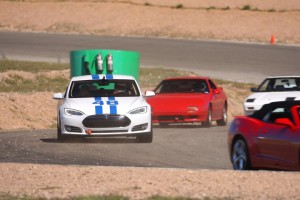 The Model S is not built for racing. It overheats after one lap of hard performance driving. When that happens, power limitation kicks in to protect the car. A yellow dashed line on the power consumption gauge appears on the dashboard. The longer you go, the more severe power limitation gets. It’s a great safety feature as it lets you push the car as hard as you want without having to worry about car damage.
The Model S is not built for racing. It overheats after one lap of hard performance driving. When that happens, power limitation kicks in to protect the car. A yellow dashed line on the power consumption gauge appears on the dashboard. The longer you go, the more severe power limitation gets. It’s a great safety feature as it lets you push the car as hard as you want without having to worry about car damage.
However this same protection mechanism has a drastic impact on the overall racing experience. You can start off as being one of fastest cars on the track on your first lap, to becoming the slowest car on the track in the subsequent laps.
Do I Need Racing Tires ?
On your first track day, no. Whatever standard tires you have on your car, they’ll work fine, as you won’t be setting any records on your first day. It’s only as you start getting more competitive and push the car harder, will you need to get tires that are more suited for racing. Bring a tire pressure gauge or a compressor if you have it. Your tire pressure should not be above 40 psi cold. Meaning, check your tire pressure in the morning before you get on the track. It should not be more than 40.
Is it a Strenuous Physical Activity ?
Yes it is. Performance driving for 20 minutes straight is a lot of work. Be prepared for that. Especially if you come from a drag racing or autocross background where racing sessions last under a minute. You will get used to it with time, but the first few times can be quite exhausting. Make sure to stay well hydrated, especially in the summer. A lot of tracks are in desert areas with hot temperatures and very low humidity. Drinking water is important to feeling well throughout the day.
Should I turn Traction Control and Regenerative Braking Off ?
Traction control will help you stay on track if you lose control, so leave it on. Regen braking improves stability during braking, especially at higher speeds, but it’s mostly a personal preference.
Is it OK to Capture my Track Experience with an Action Camera ?
Absolutely. GoPro is everyone’s favorite. It’s always nice to get GPS data readouts and overlays as well. Garmin VIRB is a leader in that area among consumer cameras in the $400 range, but they have serious accuracy issues. Professional action cameras such as AIM SmartyCam will be the best, but its high cost may not be for everyone.
Be safe and have fun on your first track day!

Lifestyle
Elon Musk seemingly confirms Cybertruck gift to 13-year-old cancer fighter
Diagnosed in 2018 with a rare form of brain and spine cancer with no cure, the teen has undergone 13 surgeries by the time he was 12.
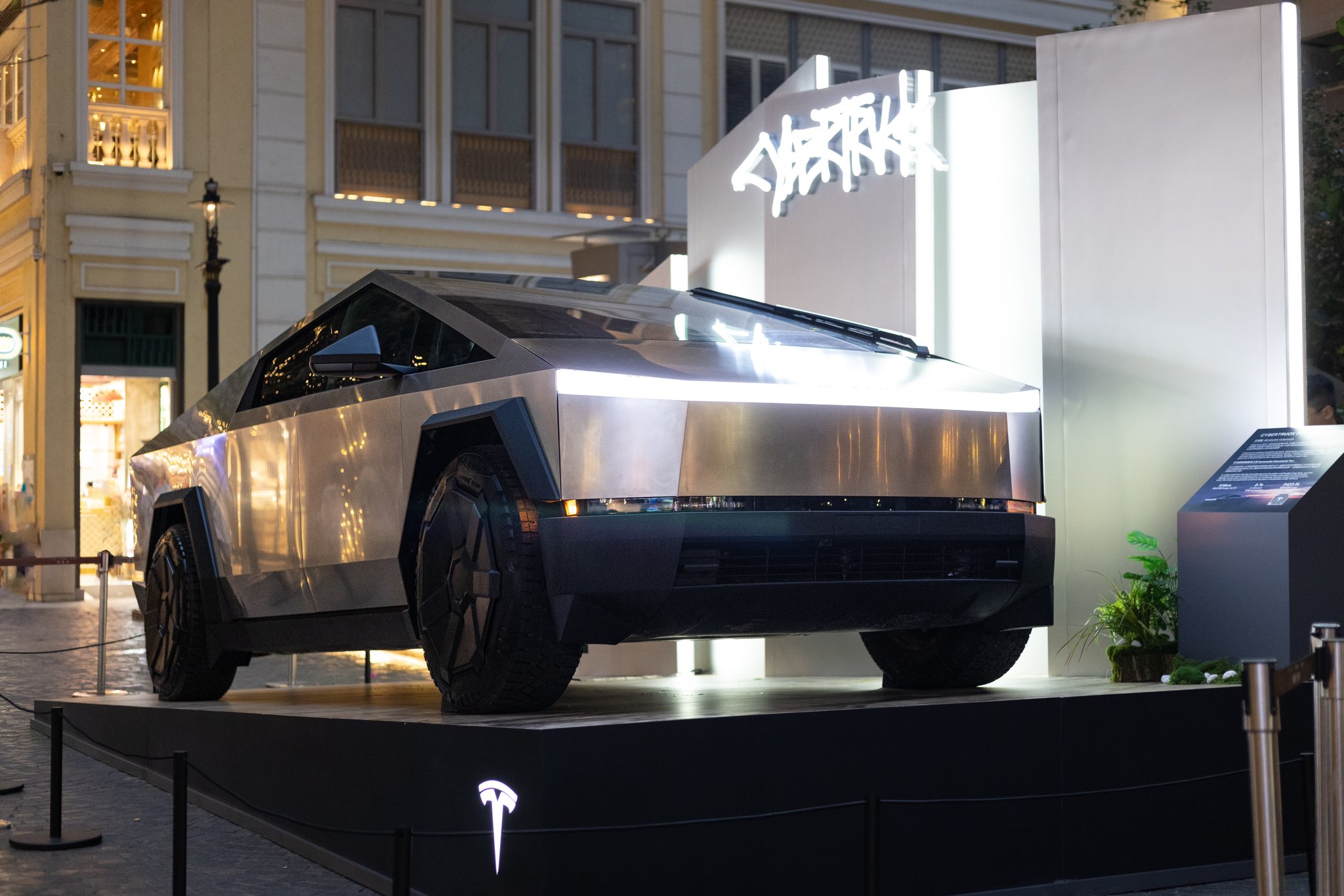
Elon Musk has seemingly confirmed that he will be sending a Tesla Cybertruck to 13-year-old Devarjaye “DJ” Daniel, a 13-year-old Houston boy fighting brain cancer. The teen was recognized as an honorary Secret Service member by U.S. President Donald Trump during his address to Congress on Tuesday.
A Chance Meeting
The Tesla CEO’s Cybertruck pledge was mentioned during DJ’s short interview with CNN’s Kaitlan Collins. When Collins asked the 13-year-old what he told the Tesla CEO, DJ answered that he asked for a Cybertruck.
“I said, ‘can you do me a big favor, when you get back to Houston can you send us a Cybertruck down there?’” the cancer fighter stated.
Daniel noted that Musk responded positively to his request, which was highlighted by Collins in a post on X. Musk responded to the post with a heart emoji, suggesting that he really will be sending a Cybertruck to the 13-year-old cancer fighter.
Teen’s Cancer Battle Inspires
Diagnosed in 2018 with a rare form of brain and spine cancer with no cure, Daniel has undergone 13 surgeries by the time he was 12. During his speech, Trump highlighted the 13-year-old’s long battle with his disease.
“Joining us in the gallery tonight is a young man who truly loves our police. The doctors gave him five months at most to live. That was more than six years ago. Since that time, DJ and his dad have been on a quest to make his dream come true,” Trump stated.
Daniels officially received an honorary badge from U.S. Secret Service Director Sean Curran, to much applause during the event.
Surprisingly Partisan
While Daniels’ story has been inspiring, Trump’s focus on the 13-year-old cancer fighter has received its own fair share of criticism. MSNBC host Nicolle Wallace, while referencing Daniels’ love for law enforcement, noted that she is hoping the 13-year-old never has to defend the U.S. capitol against Trump supporters. “If he does, I hope he isn’t one of the six who loses his life to suicide,” Wallace stated.
Anti-Musk and Trump accounts on X have also thrown jokes at the cancer fighter’s honorary badge, with some dubbing the 13-year-old as a “DEI hire” that should be looked into by DOGE.
Lifestyle
Tesla owner highlights underrated benefit of FSD Supervised
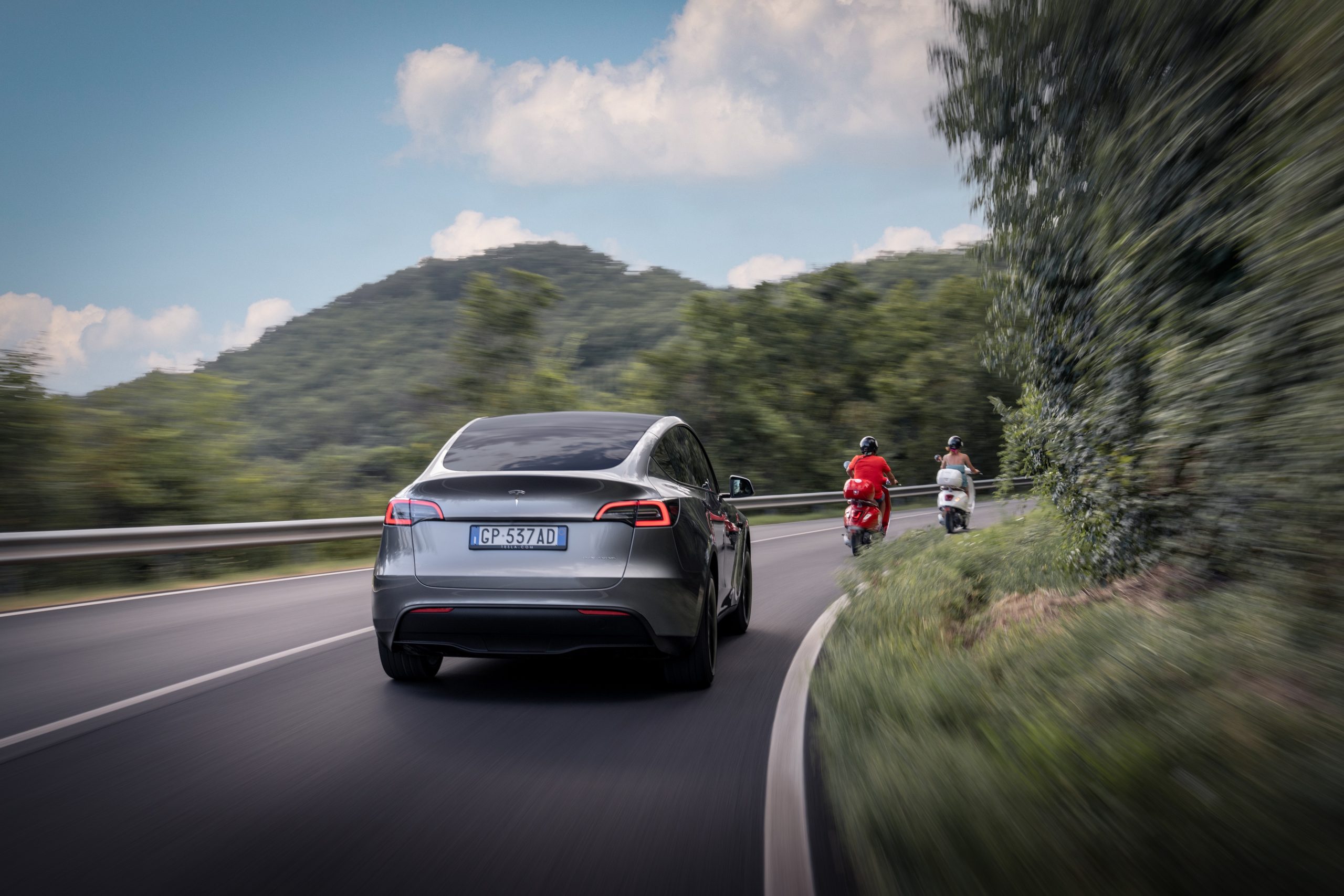
Elon Musk has been pretty open about the idea of FSD being the difference maker for Tesla’s future.
If Tesla succeeds in achieving FSD, it could become the world’s most valuable company. If it doesn’t, then the company would not be able to reach its optimum potential.
FSD Supervised’s safety benefits:
- But even if FSD is still not perfect today, FSD Supervised is already making a difference on the roads today.
- This was highlighted in Tesla’s Q4 2024 Vehicle Safety Report.
- As per Tesla, it recorded one crash for every 5.94 million miles driven in which drivers were using Autopilot technology.
- For comparison, the most recent data available from the NHTSA and FHWA (from 2023) showed that there was one automobile crash every 702,000 miles in the United States.
This morning, Tesla FSD proved to be an absolute godsend. I had to take my brother-in-law to the hospital in Sugar Land, TX, which is 40 miles away, at the ungodly hour of 4 AM. Both of us were exhausted, and he was understandably anxious about the surgery.
— JC Christopher (@JohnChr08117285) January 29, 2025
The convenience of…
FSD user’s tale:
- As per an FSD user’s post on social media platform X, FSD Supervised was able to help him drive a relative to a medical facility safely even if he was exhausted.
- During the trip, the driver only had to monitor FSD Supervised’s performance to make sure the Tesla operated safely.
- In a vehicle without FSD, such a trip with an exhausted driver would have been quite dangerous.
- “This morning, Tesla FSD proved to be an absolute godsend. I had to take my brother-in-law to the hospital in Sugar Land, TX, which is 40 miles away, at the ungodly hour of 4 AM. Both of us were exhausted, and he was understandably anxious about the surgery.
- “The convenience of sending the hospital’s address directly from my iPhone to my Tesla while still inside my house, then just a single button press once inside, and 40 miles later we were precisely in front of the hospital’s admissions area.This experience really underscores just how transformative this technology can be for society,” Tesla owner JC Christopher noted in his post.


Don’t hesitate to contact us with news tips. Just send a message to simon@teslarati.com to give us a heads up.
Lifestyle
Tesla Optimus “stars” in incredible fanmade action short film
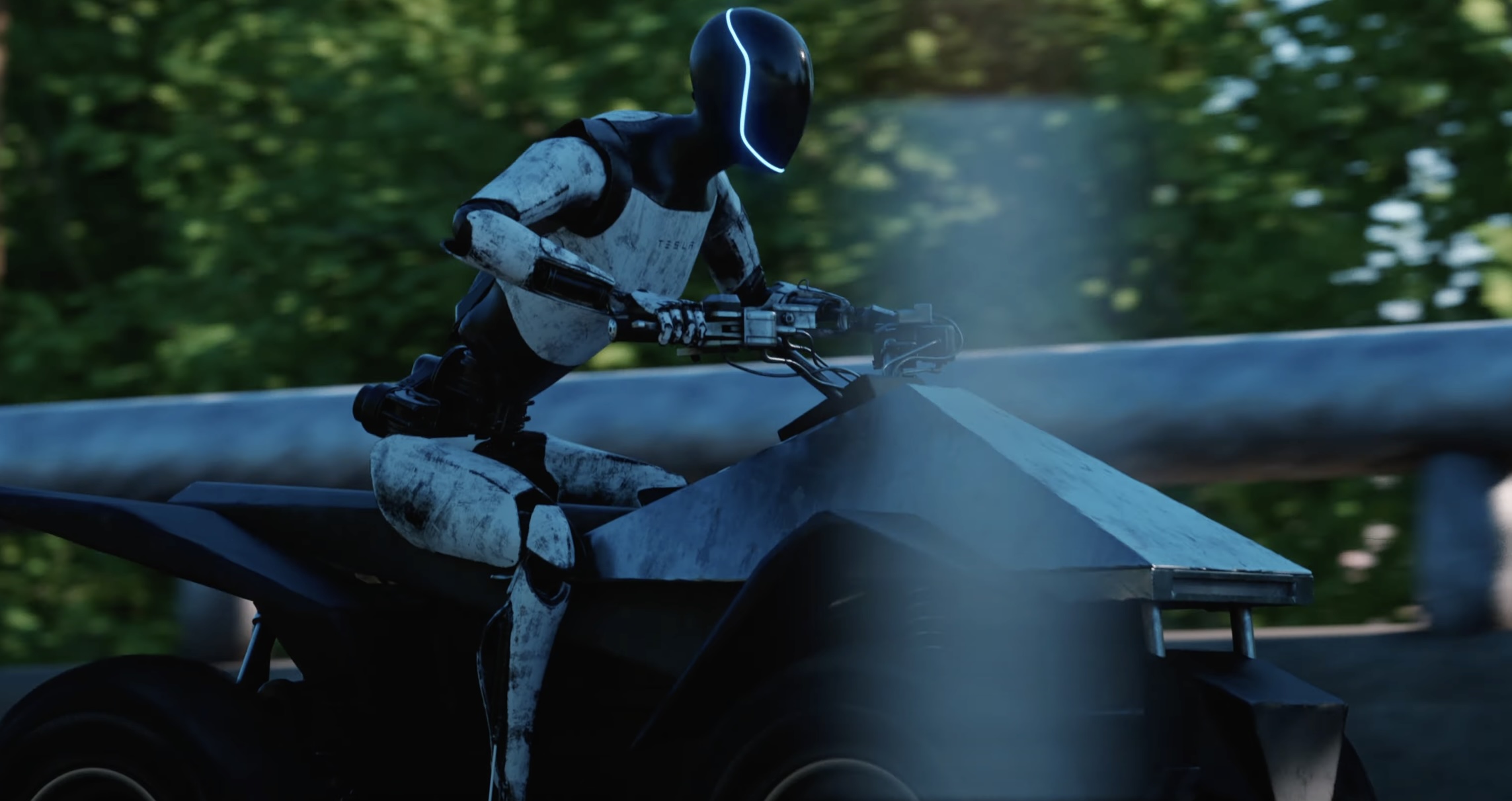
There are few things that prove an enthusiast’s love towards a company more than a dedicated short film. This was highlighted recently when YouTube’s SoKrispyMedia posted a 10-minute action movie starring Optimus, Tesla’s humanoid robot, as well as several of the company’s most iconic products.
The video:
- Shot like a Hollywood action flick, the video featured a rather humorous plot involving a group of thieves that mistakenly targeted a Tesla Model 3 driver.
- The Model 3 driver then ended up speaking to Tesla for assistance, and some high-octane and high-speed hijinks ensued.
- While the short film featured several Tesla products like the Model 3, Superchargers, and the Cybertruck, it is Optimus that truly stole the show.
- Optimus served several roles in the short film, from an assistant in a Tesla office to a “robocop” enforcer that helped out the Model 3 driver.
Future Robo-cop @Tesla_Optimus
— SOKRISPYMEDIA (@sokrispymedia) January 12, 2025
full video: https://t.co/TXpSRhcP5K pic.twitter.com/YFHZ7siAP7
Cool inside jokes:
- The best Tesla videos are those that show an in-depth knowledge of the company, and SoKrispyMedia definitely had it.
- From the opening scenes alone, the video immediately poked fun at TSLA traders, the large number of gray Tesla owners, and the fact that many still do not understand Superchargers.
- The video even poked fun at Tesla’s software updates, as well as how some Tesla drivers use Autopilot or other features without reading the fine print in the company’s release notes.
- The video ended with a tour de force of references to Elon Musk products, from the Tesla Cybertruck to the Boring Company Not-a-Flamethrower, which was released back in 2018.
Check out SoKrispyMedia’s Tesla action short film in the video below.
Don’t hesitate to contact us with news tips. Just send a message to simon@teslarati.com to give us a heads up.
-

 News1 week ago
News1 week agoTesla aiming to produce first “legion” of Optimus robots this 2025
-

 Elon Musk6 days ago
Elon Musk6 days agoTesla CEO Elon Musk’s simple message to vandals
-

 Elon Musk2 weeks ago
Elon Musk2 weeks agoElon Musk confirms two measures Tesla is taking to fight vandalism
-

 News2 weeks ago
News2 weeks agoSpaceX rescue mission for stranded ISS astronauts nears end — Here’s when they’ll return home
-

 News1 week ago
News1 week agoTesla’s Giga Berlin director responds to anti-Musk criticism
-
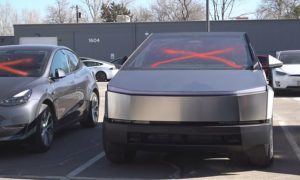
 Elon Musk2 weeks ago
Elon Musk2 weeks agoTesla owners doxxed by controversial anti-DOGE website in clear intimidation tactic
-

 Elon Musk1 week ago
Elon Musk1 week agoElon Musk to file lawsuit against former US Rep Jamaal Bowman: “I’ve had enough”
-

 News2 weeks ago
News2 weeks agoTesla reveals Cybercab battery pack and range efficiency
